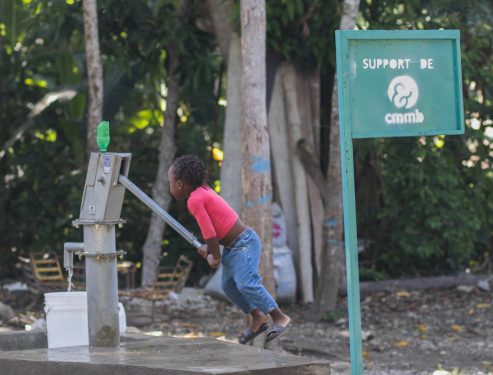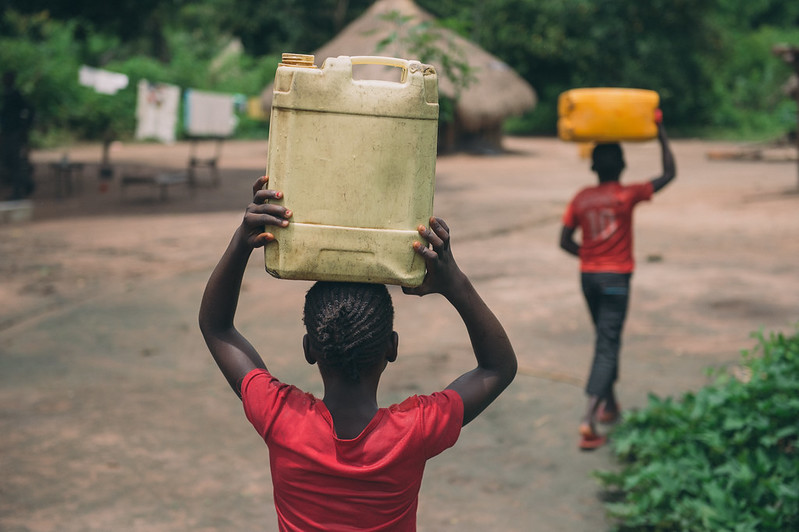
MANHATTAN — Fill a gallon container with water and hand it to a 5-year-old girl. Then, tell her to carry that 8-pound jug home, about 3.5 miles, through a scorching desert or a steaming tropical landscape.
That may sound harsh, or even farfetched, but it is a reality for families in some areas of Africa, the Caribbean, and South America, where there is no easy access to clean drinking water.
Often mothers and older children are seen with “jerrycans” that hold 5.3 U.S. gallons — and weigh about 44 pounds — balanced on their heads. The average distance worldwide for these daily treks is about 3.5 miles one way.
Catholic Medical Mission Board is among many charitable organizations trying to bring fresh water to communities in places like Kakuyu, Kenya, and Côtes-de-Fer, Haiti.
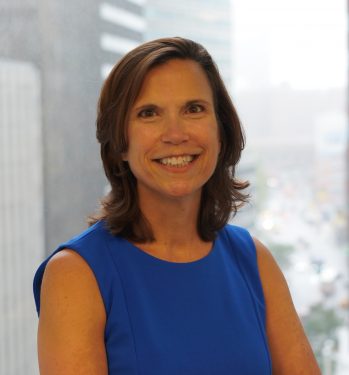
Last year, Manhattan-based CMMB built wells and other catchment structures to bring safe water to more than 260,000 people worldwide, according to the group’s data.
The need is dire. Unsafe water carries deadly viruses or bacteria that cause diarrhea, cholera, dysentery, typhoid, and polio. Consequently, more than 2,000 children die each day from unsafe water, CMMB’s data shows. That’s more than AIDS, malaria, and measles combined, the group says.
“About 80 percent of all diseases are somehow water- and sanitation-related,” said Mary Beth Powers, CMMB’s president and CEO. “So when you look at those kinds of data, you realize water is health.”
Pope Francis has agreed and voiced support after the Angelus prayer on March 21, one day before World Water Day. He said the day, sponsored by the United Nations, “invites us to reflect on the value of this wonderful and irreplaceable gift of God.”
“For us believers, ‘sister’ water is not a commodity: It is a universal symbol and a source of life and health,” the pontiff said. “It is necessary to ensure drinking water and sanitation to all.”
Choosing hydration or hygiene
Powers explained CMMB focuses on improving the health of a mother and her newborn’s first 1,000 days, not just for families but also for their communities.
“The mother’s health is super important,” Powers said. “The loss of a mother is tremendous, not just for that child, but also the other children in the family. Plus, it’s a loss of the other roles that she might play in the community.
“So we do a lot of work on maternal health and on improving the quality of deliveries. In places like South Sudan, where there aren’t a lot of midwives, we’ve helped bring in midwives and trained midwives.”
Powers and Dr. Syndie, CMMB’s program manager in Haiti, both described how clean water is critical during a child’s birth through the end of the 1,000 days, about 2-and-a-half years old.
Dr. Saint-Hilaire added that mothers want good hygiene, but other factors can hinder good intentions.
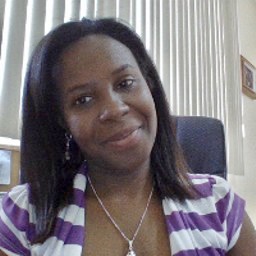
“It’s a strong challenge,” Dr. Saint-Hilaire said in a video conference call from her office in Port-au-Prince. “You tell a mom, ‘You should wash your hands before you feed the kids.’
“But sometimes it’s going to be difficult because they cannot store that much water to do it as often as necessary.”
That is because water delivery systems vary.
Dr. Saint-Hilaire, a pediatrician, said Haitians with some money can afford to pack jerrycans onto donkeys. Or to the back of motorcycles. But most lug water as best they can — on their heads, with slings, or grabbing jerrycans by their carry handles.
The doctor said it is common to see “pre-K” kids carrying gallon buckets or jugs to school, where there is no running water.
Frequently, however, their struggles come up short. Many of these women and children can’t always carry enough water for all of the family’s needs, forcing mothers to choose between hydration and hygiene.
But there are other problems too. In some areas, the daily chore of fetching water prevents kids from going to school.
Sand Dams and Tippy Taps
Powers said CMMB employs different methods to improve water access.
“Some places where we work, like in Kakuyu, Kenya are very arid,” she explained. “We can’t just dig a well and hit water.
“So in Kakuyu, we built something called ‘sand dams.’”
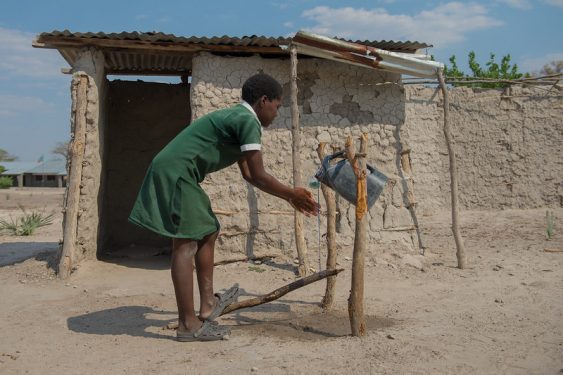
This technique employs concrete dams on sandy riverbeds. When it rains, areas behind the dams fill with wet sand, of which 25-40 percent is drinkable water, thus creating an artificial aquifer.
Some water sanitation challenges emerge from a sudden health crisis. For example, a cholera outbreak in Zambia, 2017-2019, resulted in a partnership between CMMB, the country’s health ministry, and Procter & Gamble. Together they distributed 250,000 small packets of P&G’s water purification solution to 9,000 families.
“It can take very turbid water that you and I wouldn’t think about drinking and filter out bacteria, dirt, and all sorts of things,” Powers said. “It can turn water that’s questionable into water that’s safe to drink.”
In Haiti, CMMB installs “Tippy Taps.” These devices employ pedals attached by cords to slightly elevated water containers. To activate one, a person steps on the peddle — sometimes it’s just a stick — which tips the container to release water for handwashing, almost like opening a water tap.
The work is expensive.
For example, Powers said it costs as much as $20,000 to build a sand dam in Kenya’s remote areas. Fundraising, therefore, is critical because CMMB operates a wide range of programs, from nutrition to HIV treatment and prevention, to economic empowerment.
The essence of life
Recently, New York City college students helped by forming a partnership with CMMB. Also contributing was the Thirst Project, another nonprofit charity focused on water. The result was the #ACT4Water campaign that culminated on World Water Day, March 22.
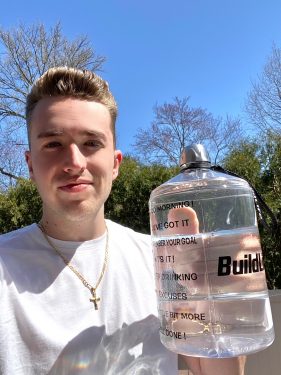
The event was thought up by two medical students and friends from high school back home on Staten Island — Priya Singh of Hunter College and Peter Fusco from CUNY School of Medicine.
Singh is president of CMMB X Hunter College, a club formed to facilitate learning opportunities between students and CMMB’s programs. Singh, a junior studying human biology, hopes to become a neurosciences doctor; she previously worked as a summer intern at CMMB.
Fusco, president of the American Medical Student Association, wants to be a neurosurgeon.
The students recruited 50 friends to accept one or all three challenges. Included was a hike to fetch water (the 3.5 miles, or 5 kilometers); donate $5; challenge five friends or family members to do likewise.
They raised $1,335 for CMMB and the Thirst Project, Singh said.
Fusco took all three challenges. He hiked through the Mount Loretto Unique Area, a nature preserve on Staten Island’s south shore. His family belongs to Our Lady Help of Christians Parish, also in that borough.
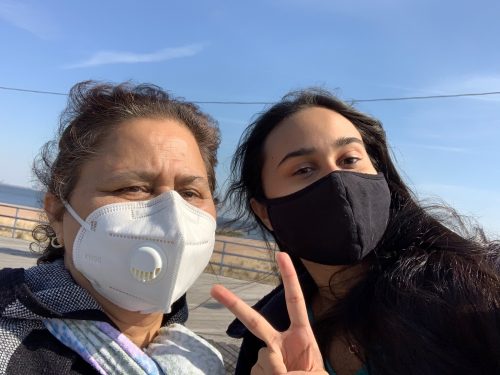
“I have a big workout jug that I filled with water,” Fusco said. “The first 15 minutes of my walk didn’t seem too labored, but I noticed on the later kilometers that it seemed to be a little bit of a struggle — an annoyance.
“The thought of having to do such an extensive walk, with such heavy baggage was powerful, and it drove the point home for me, emotionally.”
Singh took the walk with her mother, Sukhraj Kaur, along the island’s Franklin D. Roosevelt Boardwalk and beach. To replicate the water fetch, she filled a backpack with 44 pounds of thick textbooks.
“Man, it was very powerful,” she said. “I didn’t bring water with me. Within minutes, I wanted a sip, and I remembered I didn’t have any. It was definitely difficult.
“My mom told me that this was what she had to do when she was younger because her village in India also didn’t have clean water nearby. That just added to the value of this issue; it became personal, knowing my mother went through it as well.”
Singh is not Catholic but shared Pope Francis’ sentiment that everyone should have the right to clean drinking water, no matter where they live.
“It’s unfortunate that these people have to experience this problem when it shouldn’t exist in the first place,” the biology major said. “H20 — it’s needed for everything. Every biological process you can think of, water has some role in it.
“It is the essence of life.”
